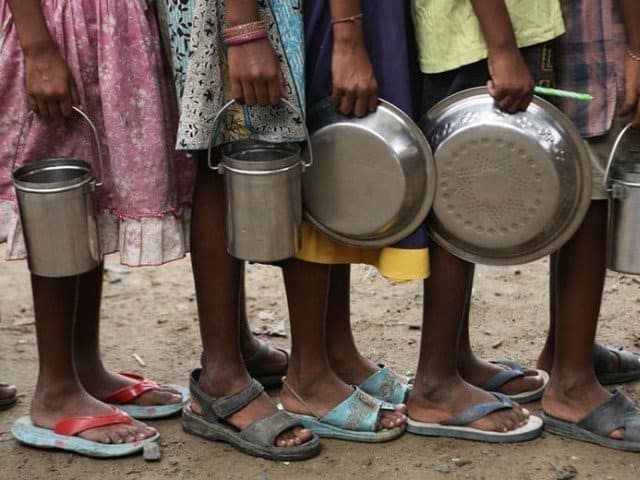The Global Health Index lists Pakistan as worse for hunger than Ghana and Kenya. Since 2000, Pakistan’s score on the Index has indicated serious levels of hunger. Even before the ongoing wheat and sugar crisis-hit public discourse, the incidence of child stunting in Pakistan was among the world’s highest. Additionally, reports from 2019 claim that severe weight loss among Pakistani children is touching emergency levels. In fact, in 2016, USAID reported that despite being a “food surplus” country, 60 percent of Pakistan’s population was food insecure. Although the current food crises underline failed governance, there is a dire need to evaluate the primary source of undernourishment as a persistent challenge for Pakistan.
Nobel Laureate Amartya Sen compellingly argues that rather than low food output, poverty is the primary cause of hunger as it prevents people from buying or producing food, even when overall food production is sufficient. Sen sees the resulting malnourishment and hunger as an “entitlement failure”, whereby poor families fail to access food. The inadvertent effects of setting minimum prices for wheat by way of subsidies in Pakistan illustrate Sen’s argument. By procuring wheat at a marked-up price, the government pays subsidies to wheat farmers to maintain their incomes above a certain threshold to keep rural poverty low. However, this policy has failed to reduce rural poverty because poor farmers with small landholdings produce small harvests or lack adequate storage infrastructure, meaning that they have to sell their produce soon after harvest and later buy food from the market at high prices.
Setting a price floor for wheat also makes non-wheat growers worse off as they are forced to buy wheat at high prices. So, wheat subsidies exacerbate rural poverty by inflating the market price of wheat without leading to a corresponding increase in rural incomes. Among other factors, this phenomenon explains why the poorest groups could not access sufficient food, even in times of good harvests.
In addition to ill-informed policies, the government’s incompetence further compounds poverty and inaccessibility to food. In the second half of 2019, wheat and sugarcane prices began to spiral out of control, after the government negligently allowed a hundred thousand tonnes of sugar and forty-eight thousand tonnes of wheat to be exported. Since the prices of both crops were on the rise in the international market, this measure led to speculative buying and hoarding of wheat and sugarcane by farmers, flour and sugar mills and various other actors. Amidst the crisis, because of inaccurate production and demand forecasts, the public sector failed to release sufficient amounts of wheat and sugarcane from its reserves to curb rising food prices. Consequently, despite abundant harvests, the domestic market faced severe shortages of these staple crops.
The resulting food price inflation disproportionately impacts poor households, who spend about three-fourths of their incomes on food. In a country where almost 40 percent of the population lives below the poverty line, and COVID-19 threatening to push millions more into poverty, this devastating situation begs the question of why the government resorted to such measures in the first place.
The existence of a bias in favour of the elite in politics could solve this conundrum. Capitalist farmers and resource-rich landlords dominate politics and influence lawmaking. With virtually no representation of poor or marginalized people in the government, anti-poor policies go uncontested. For instance, wheat subsidies meant for poor farmers are mostly captured by rich farmers who have huge tracts of land to cultivate large amounts of wheat. Similarly, as food inflation wreaks havoc for the majority, politically powerful sugarcane producers benefit by gaining subsidies as well as by selling sugarcane at inflated prices in the domestic market.
Perhaps Pakistan can learn important lessons from India. Historically, compared to Pakistan, agricultural policies in India have been more farmer-friendly. Farmers and agricultural labourers have played an active role in implementing land reforms in India, which helps explain why farms of the optimal size- between ten and twenty-five acres- are over twice as common in India than in Pakistan. India also facilitates small and medium farms by subsidizing small tractors, fertilizers, irrigation and other inputs, allowing intensive cultivation. Owing to such progressive farming practices, India stands as the world’s second-largest wheat and sugarcane producer.
Additionally, to guarantee farmers’ incomes, India regulates commercial relations between sugarcane farmers and sugar factories by setting minimum prices that factories are obligated to pay sugar farmers. India also has an extensive food aid program that aims to provide food to those living below the poverty line. Rice, wheat and sugar procured by the government are redistributed to poor households at subsidized prices. Other mechanisms of providing food security in India include school lunches and food-for-work programs. The incidence of stunting among children under the age of five decreased from 48 percent to 38 percent between 2006 and 2016, showing that public action has helped India reduce malnourishment.
To increase low-income families’ access to food in Pakistan, poverty reduction efforts need to be developed to provide employment, healthcare and education in rural and neglected areas to improve income security and people’s wellbeing. The government’s attention must be directed towards vulnerable areas such as Thatta, where fishermen have lost livelihoods because of environmental degradation, and Tharparkar, where malnourishment persists due to abysmal public health provisions, especially for women and children.
There is a consistent fault line in successive governments’ approaches towards securing farmers’ incomes by providing subsidies alone. Rather than fixing the procurement price of staple crops at a static level by paying subsidies, a better way of providing income security to farmers would be to stagger subsidies throughout the year to account for seasonal variations in the supply of crops. In addition to subsidizing staple crops, it is crucial to maintain adequate levels of production to meet domestic demand by imposing export restrictions and procuring sufficient grain. Moreover, excess grain procured by the government could be used to provide free school lunch meals in public and low-fee private schools to help school children meet their recommended dietary requirements.
Given that there is an inextricable link between food inflation, poverty and food insecurity, is Pakistan’s first-ever National Food Security Policy a promising solution? Launched in 2018, the food policy aims to reduce poverty, improve food access and develop sustainable agriculture methods. While the policy envisions a holistic approach toward combating food insecurity, it has not yet translated into actual measures taken. Successful implementation of this strategy involves close coordination between the provincial and federal governments. Amidst rising political tensions, such coordination seems hard to achieve.
The fact that Pakistan’s first food policy was introduced as late as 2018, in spite of prevailing food insecurity, reflects misplaced national priorities. However, if anti-poverty measures like the National Food Security Policy are implemented effectively, with the active participation of farmers and rural households, the country could look towards mitigating hunger in the future.
The author is a fourth-year business student at LUMS. She is passionate about studying policy-related issues facing Pakistan.














